#Humorama
Explore tagged Tumblr posts
Text




art by Bill Ward (1960s)
#bill ward#pinup art#risqué cartoons#burlesque art#men's magazines#telephone girls series#humorama#sixties#1960s
195 notes
·
View notes
Text
‘Weak willed!’
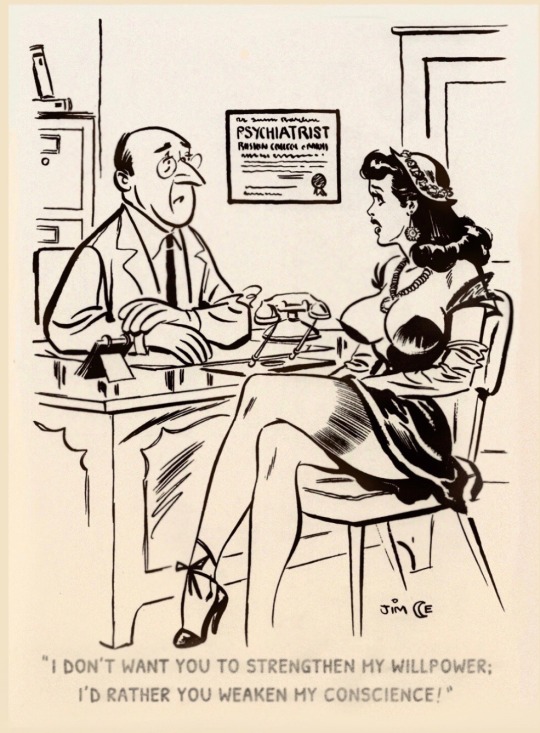
Original artist: Jim Mooney
Source: ‘Humorama’ (1968)
#pin up style#pin up art#comic book art#pin up cartoon#good girl art#pulp art#comic strip art#humorama#Jim Mooney#1960s#1968
568 notes
·
View notes
Text

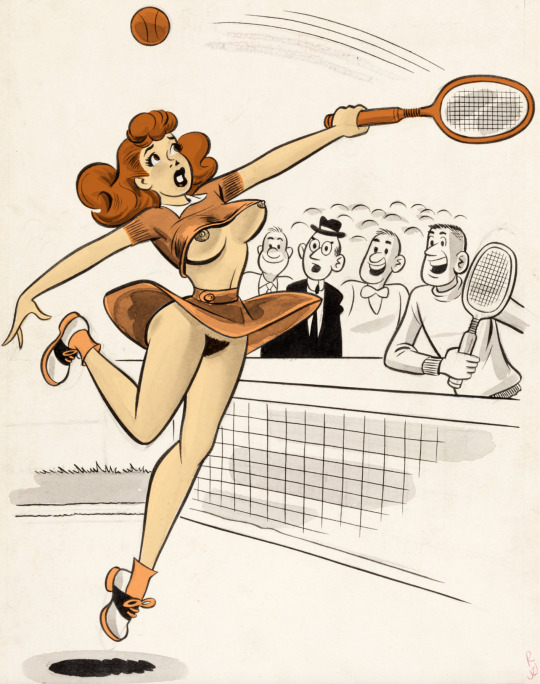
Archie's great artist, Dan DeCarlo, drew this for Gaze Magazine in August, 1961. You can see that someone at Timely censored it before publication with some black marker scribbles. Luckily, using highly advanced infrared x-ray technology, we here at #alteredarchie have been able to uncover previously hidden treasure. The full glory is revealed!
318 notes
·
View notes
Text
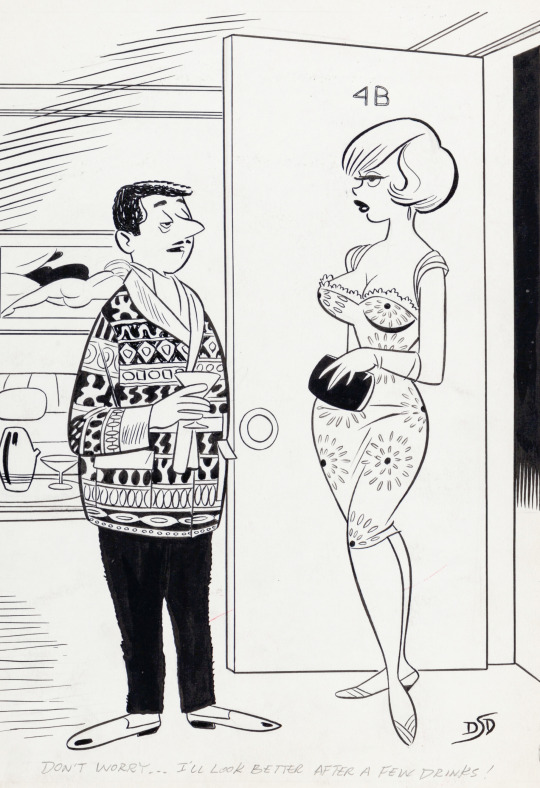
"Don't worry...I'll look better after a few drinks!"
A Humorama gag by Dan DeCarlo
131 notes
·
View notes
Text

Bettie Page Magazines, Covers and Inserts, #230
#humorama#bettie page#bettiepage#long hair#sexy#beautiful smile#long legs#betty page#beautiful face#beautiful eyes#playful entertainment
26 notes
·
View notes
Text

Eugene Bellows “Yeah, But Is It Music?” Humorama (undated) Source
8 notes
·
View notes
Text
necktie wear

Bob Montana is channeling Dan Decarlo on this one.
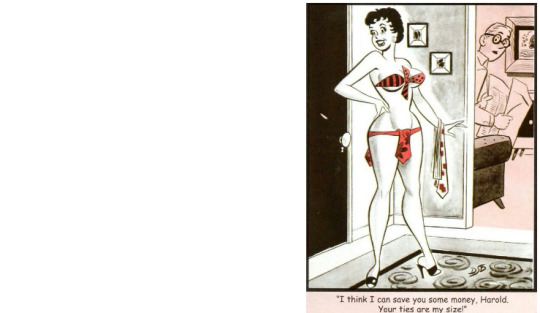
Decarlo's fashion sense is shown in at least one other illustration with multiple ties wrapped around a woman's bosom, interesting in that it is a couple tied falling from a bowtie.
#Archie Comics#Betty Cooper#Veronica Lodge#Harold#necktie#Are the boys coming in gowns for this party?#Turnabout Party#Bob Montana#Dan Decarlo#Humorama#It strikes me that the third character in the comic strip is a regular and has a name#Bob Montana universe not interacting with the comic books
14 notes
·
View notes
Text
prickly bastard

#digital drawing#digital painting#digital art#fantasypainting#humorama#artwork#illustration#artists on tumblr#lol
3 notes
·
View notes
Text

Dan DeCarlo Cartoon Parade July-1963 Single Panel Gag Cartoon Illustration Original Art (Humorama, 1963)
16 notes
·
View notes
Text
Rosalie Duthé, Anita Loos, Bill Wenzel, and Barbie.
I think at this point we've all accepted there's no single bimbo point of origin (or, POO). No bimbo ground zero. Rosalie Duthé is often cited as not only the first example of a bimbo but the first dumb blonde.
At the moment, she's even on the Wikipedia page!

Which is honestly really unfortunate imo seeing as she was a real person and a prostitute, but that's neither here nor there, I guess. Anyway. Unless I'm mistaken, we don't actually know much about Rosalie Duthé. And even if she was a singular influence on the very concept of bimbos and dumb blondes, then what happened? Where are the examples of dumb blonde and bimboish characters appearing in plays and literature from 1775 onward? How far did this idea spread outside of France? I'm not saying its not possible or that these examples don't exist, but its hard to pin down. When Rosalie Duthé was alive "bimbo" was still only Italian for "little boy". And while the play mocking her may have introducd the concept of the dumb blonde that doesn't mean it was necessarily solidified as an archetype right then and there.
Enter Anita Loos. By the time her comic novel, Gentlemen Prefer Blondes, is published in November of 1925 (after having been serialized in Harper's Bazaar) the dumb blonde, bimbo, and gold digger are already established archetypes. While Loos most definitely helped popularize these idea with her internationally best-selling often-adapted satire, she was utilizing what was already there. If anything the original idea she pushed was that men prefer blondes and that blondes have more fun. Anita Loos also wrote the screenplay for the 1932 film, Red-Headed Woman, where Jean Harlow plays an ambitious flirty giggly woman that fucks pretty much every male character that appears in the film (and doesn't appear in the film).
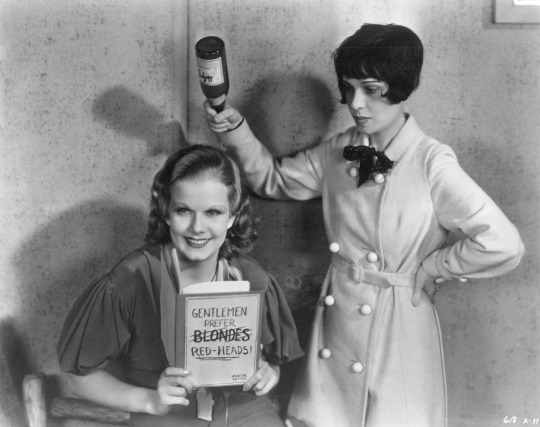
(pictured, Jean Harlow and Anita Loos)
Then of course in the 50s we get Marilyn Monroe, Jayne Mansfield, Mamie Van Doren, and Judy Holliday. There were also men's magazines like Humorama featuring art from artists like Bill Ward, Dan DeCarlo, and Bill Wenzel. Featuring women who were either clueless, horny, or gold-digging, but all extremely buxom.
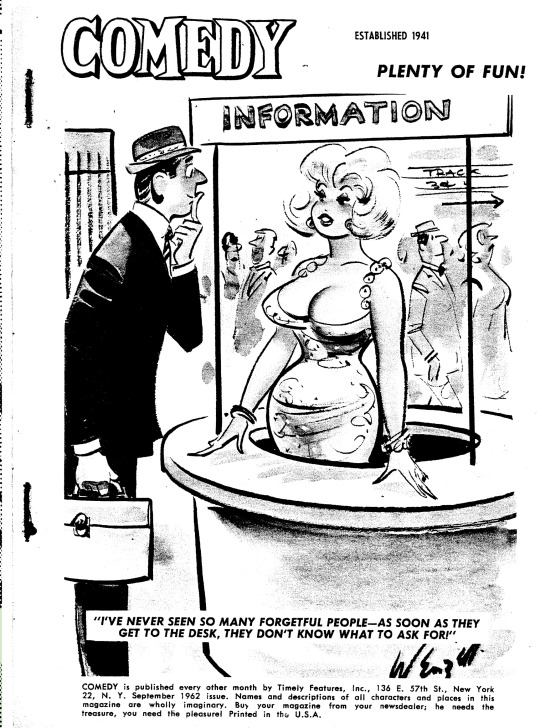
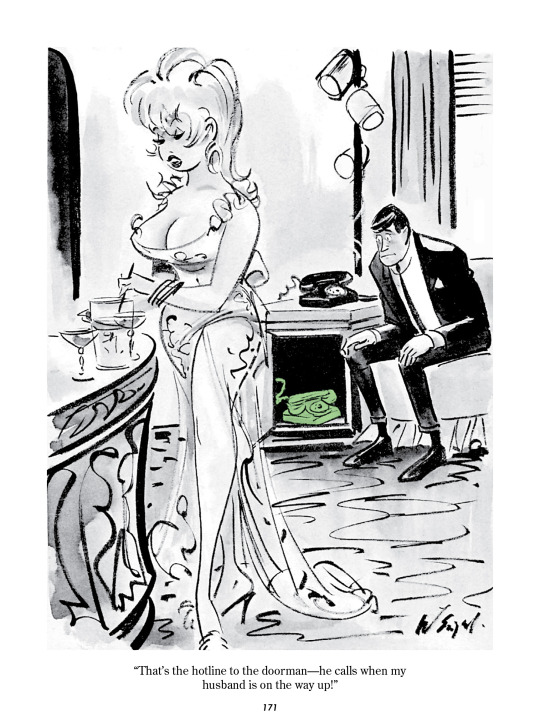

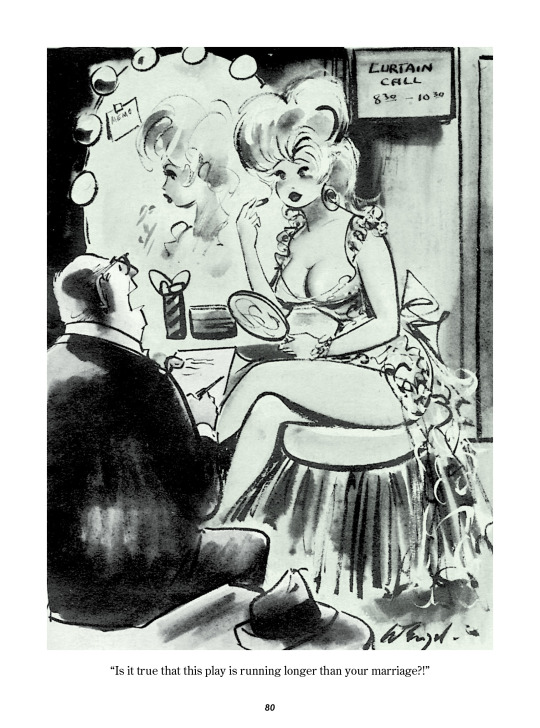

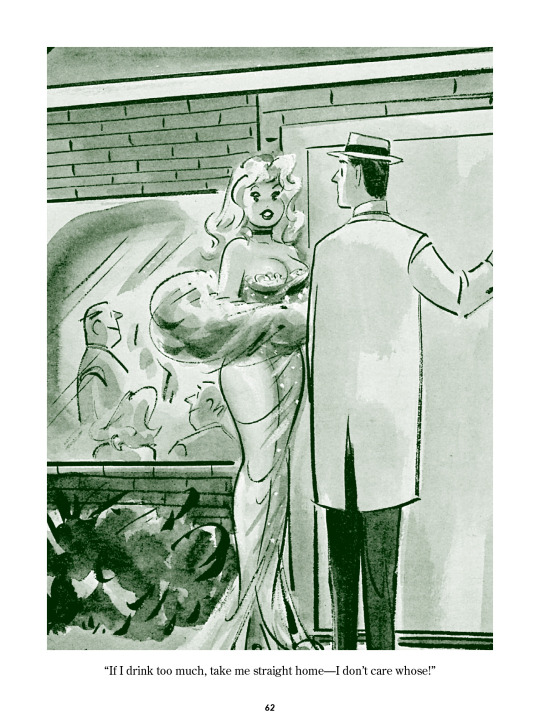
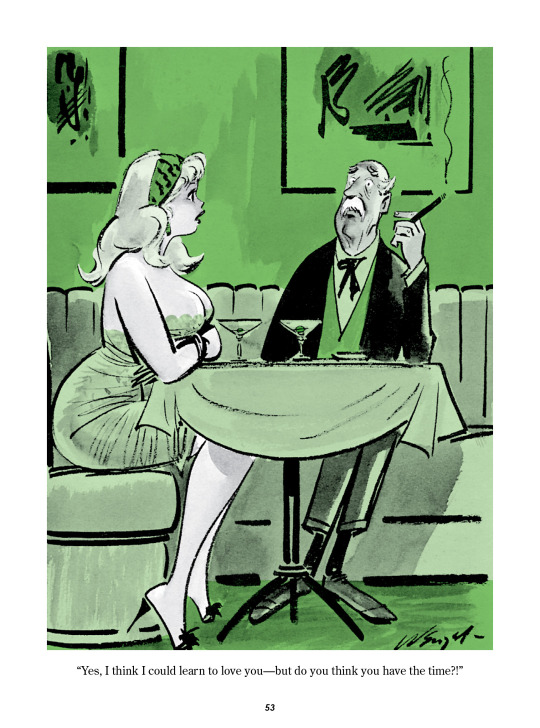

And 1959 saw the release of the original Barbie, which was just a slightly modified version of Bild Lilli, a German sex doll. I don't have much to say about that, its still something I need to do more research on, and that's part of the point of this post. Connections are there but hard to find. I really can't speak to what influence Barbie has had specifically, I think it may all be surface level, but there's something to be said about the fact so many women I follow will cite or invoke her. And that "doll" is even considered a compliment/ideal in general, physically and non-physically. You know in the sense of "You're such a doll" or "She's so pretty she looks like a doll." Its interesting. My friend says dolls represent "an easily replicated curated aesthetic" and that may be the reason for the point of reference.
There was a lot more I was going to say and this post was going to be a lot less nonsensical but I am extremely tired. I thought I could clearly and quickly get my thoughts out before I had to go to sleep. I was wrong. Sorry. Goodnight!
#understandingbimbos#bimbotxt#bimb0#bimtheory#bimbo theory#bimbeau#bimboz#bimbeaufication#anita loos#gentlemen prefer blondes#bill wenzel#red-headed woman#jean harlow#idk#rosalie duthe#marilyn monroe#bild lilli
42 notes
·
View notes
Photo

(via ComicArtFans Roundup - Dan DeCarlo)
“ARCHIE GIANT SERIES #4 PG 31
ARTISTS:DAN DECARLO OWNER:GUY MILLS; MEMBER SINCE 2004 While Dan DeCarlo did not create Archie Andrews and the Riverdale gang his style ended up defining those characters for decades. After beginning his career at Timely Comics (the precursor to Marvel) on titles such as Jeanie and Millie the Model and providing one panel cartoon gags for Humorama, DeCarlo was freelancing on Archie as well as early as 1951. While editorial at first encouraged him to try and mimic Bob Montana, DeCarlo found it too limiting and ultimately was permitted to draw as he pleased. Part of the reason audiences flocked to his work was drawing the characters in clothes actual teens would wear as well as making the girls visually appealing. In this featured page even the holidays do not put a pause on Betty and Veronica's fight for Archie's affection as Betty pretends to be inept at wrapping presents and decorating the tree just to keep Archie to herself.”
2 notes
·
View notes
Text
Lady thoughts
Artist: Louis Priscilla ‘Humorama’ (1957 & 1960)

View On WordPress
0 notes
Text
‘Health Risk!’
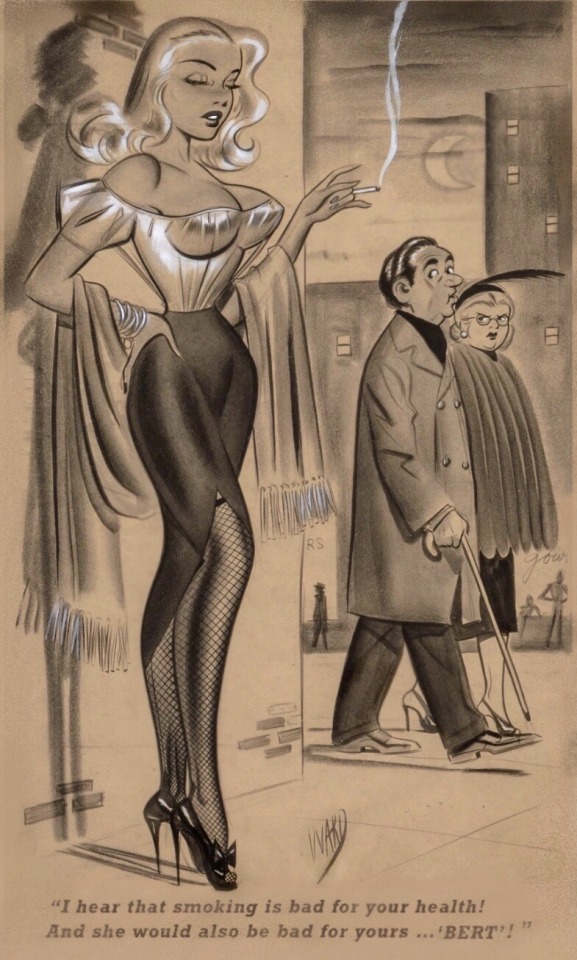
Original artist: Bill Ward
Source: ‘Humorama’ (1970)
#pin up style#pin up art#comic book art#pin up cartoon#good girl art#pulp art#comic strip art#Bill Ward#humorama#1970s#1970
403 notes
·
View notes
Video
Scandolls v01n01 1959 p010 by Beau Collier Via Flickr: Joaquin Albistur, 1959. Apparently could work in vastly different styles, as his excellent cartoons appeared in Humorama publications and magazines like Scandolls, but he also has a body of impressive comics work in the golden age for Simon and Kirby at Prize Hillman as well as later at DC and Hanna Barbera: someoriginalart.blogspot.com/2014/03/joe-albistur.html
0 notes
Text
"I don't know how to dance. Wanna talk it out?"

Humorama cartoon by Bill Wenzel
66 notes
·
View notes
Text

Bettie Page Magazines, Covers and Inserts, #206
#humorama#January#bettie page#bettiepage#sexy#beautiful smile#long legs#beautiful face#beautiful eyes#girlie magazine#matador pants#long hair
26 notes
·
View notes
